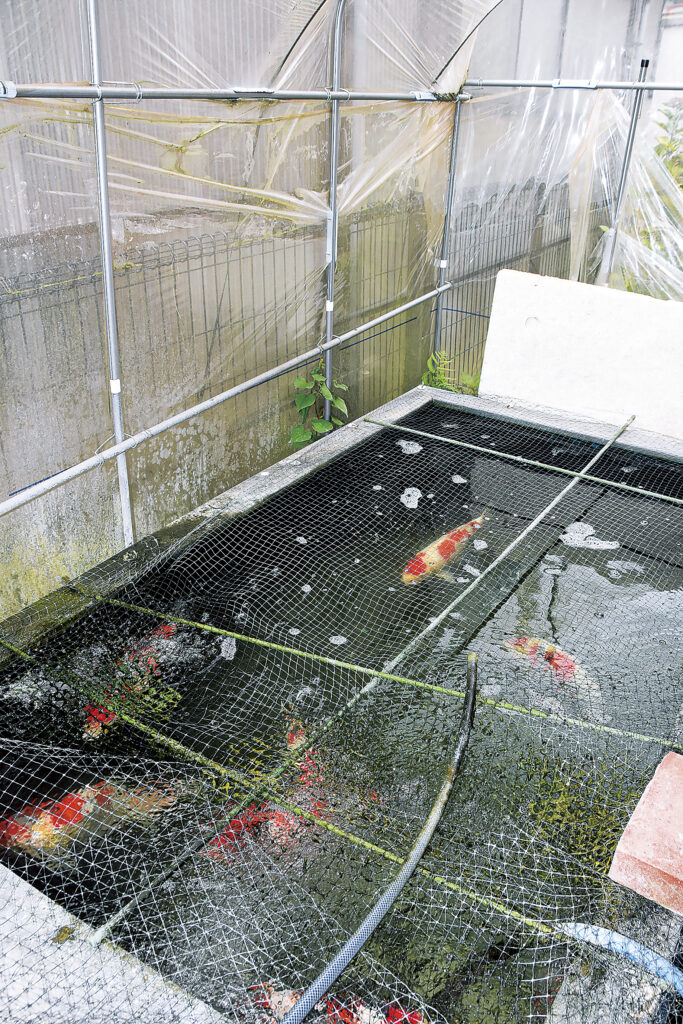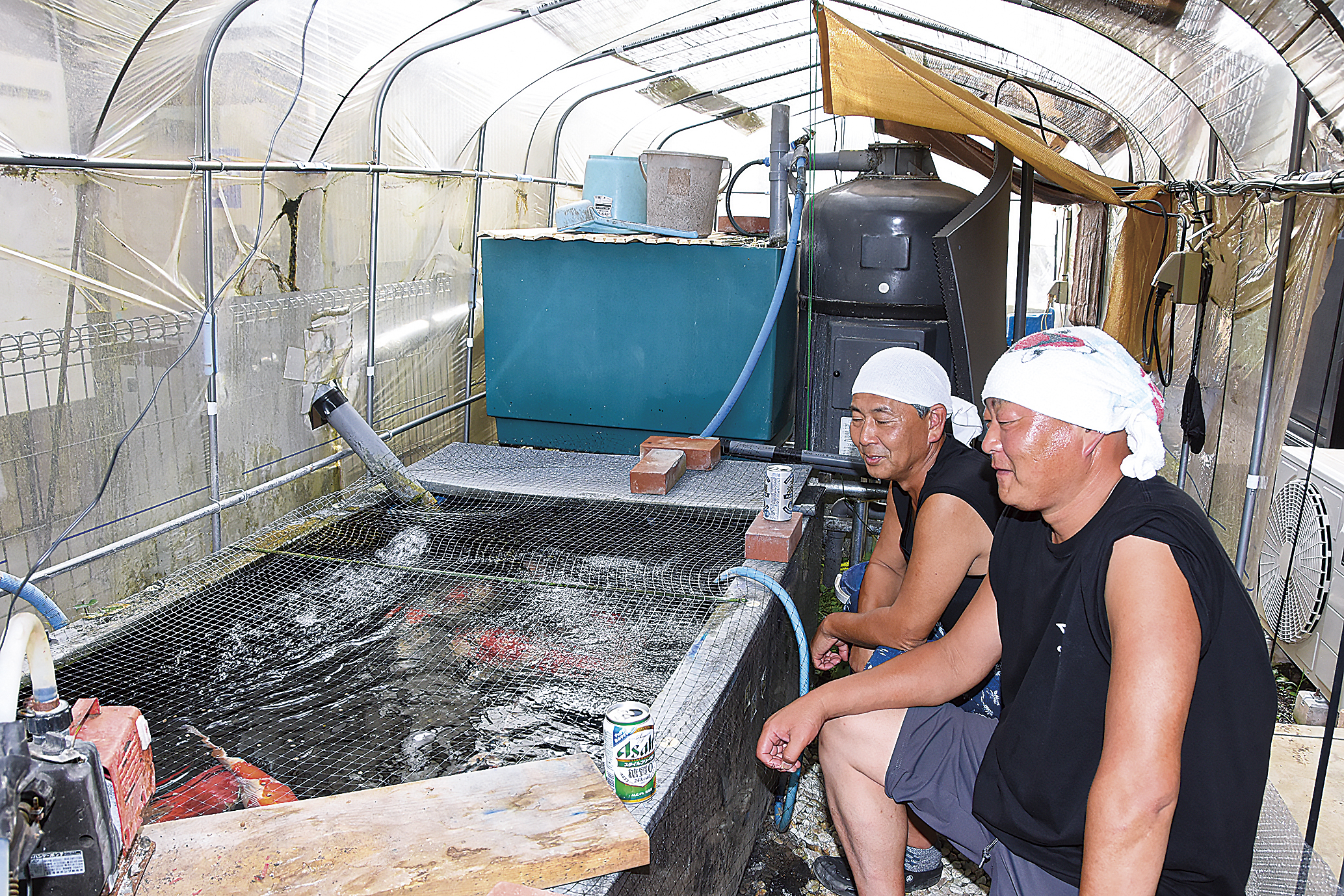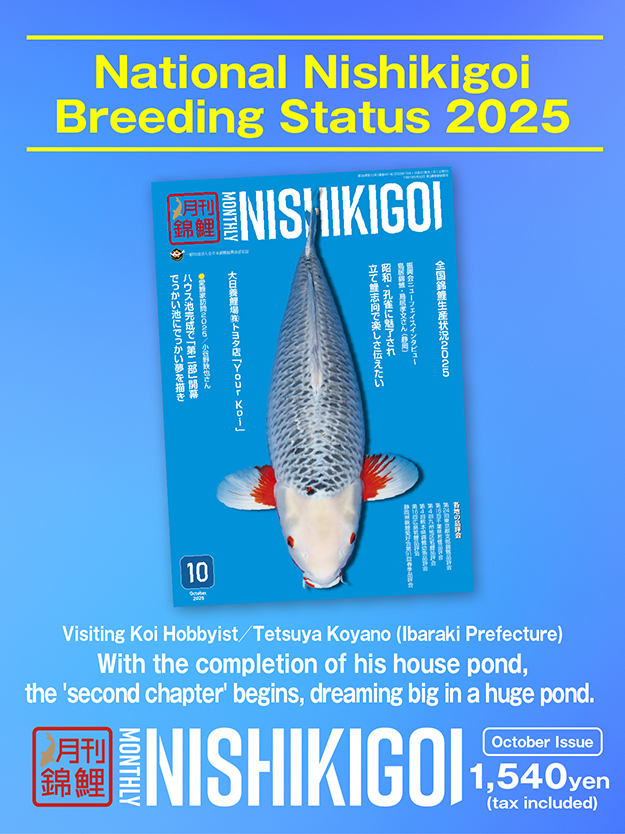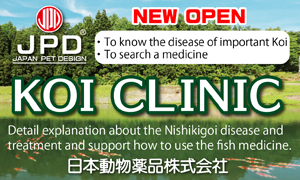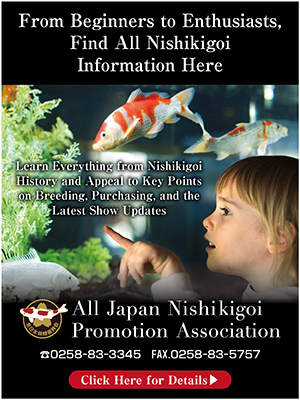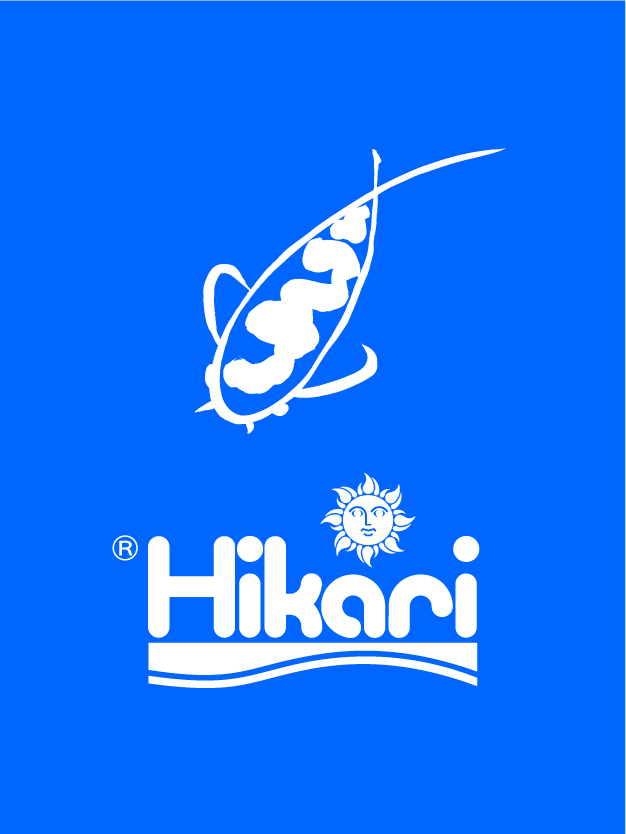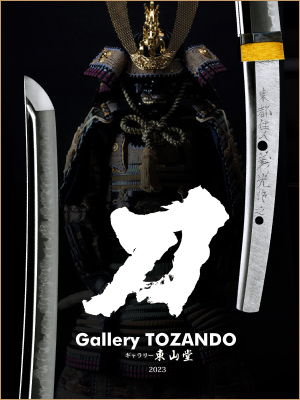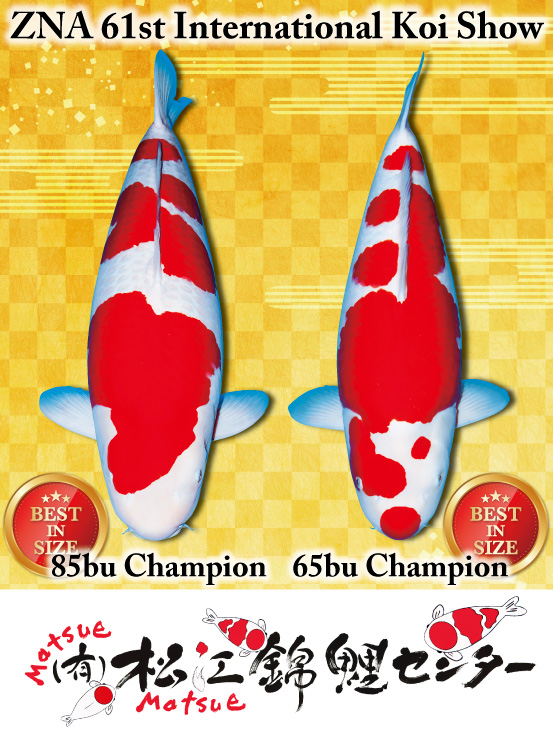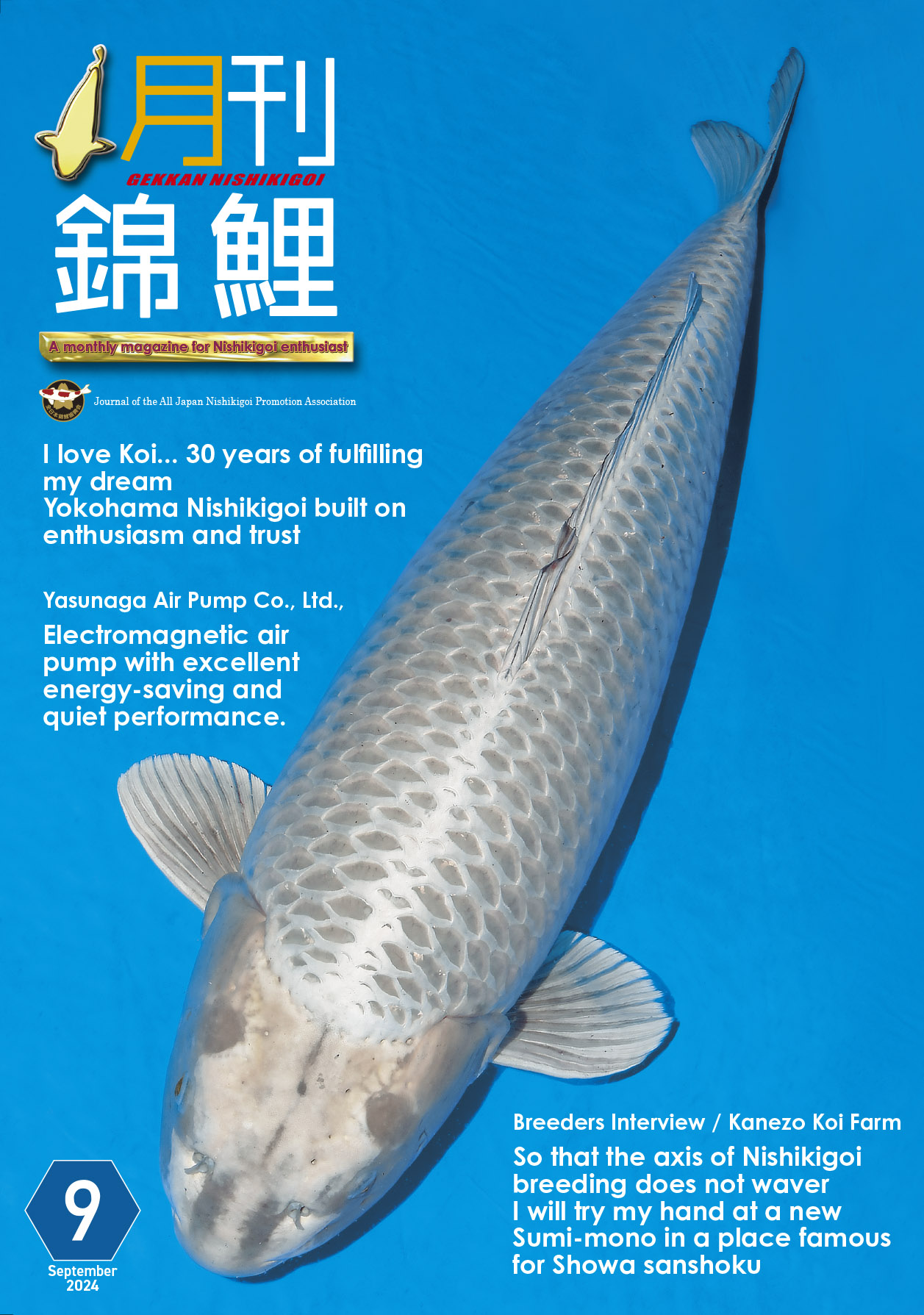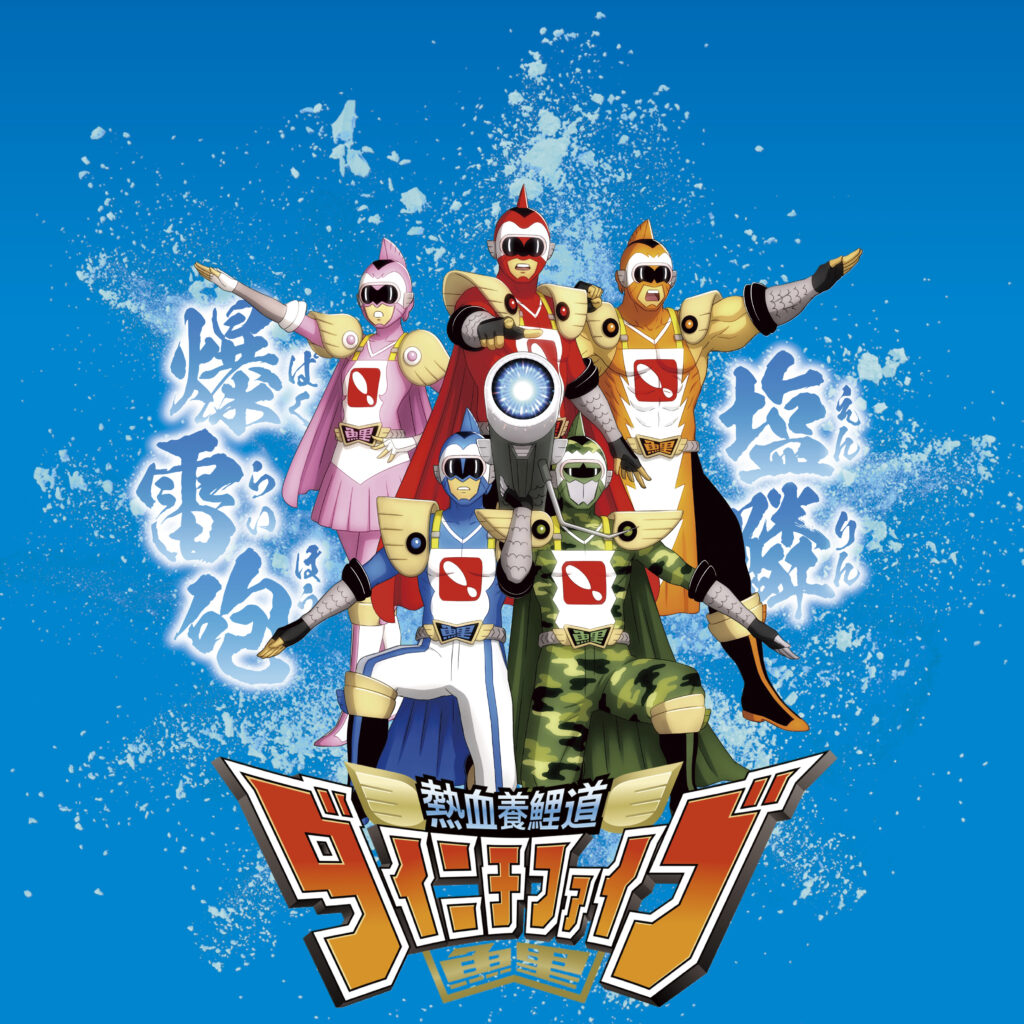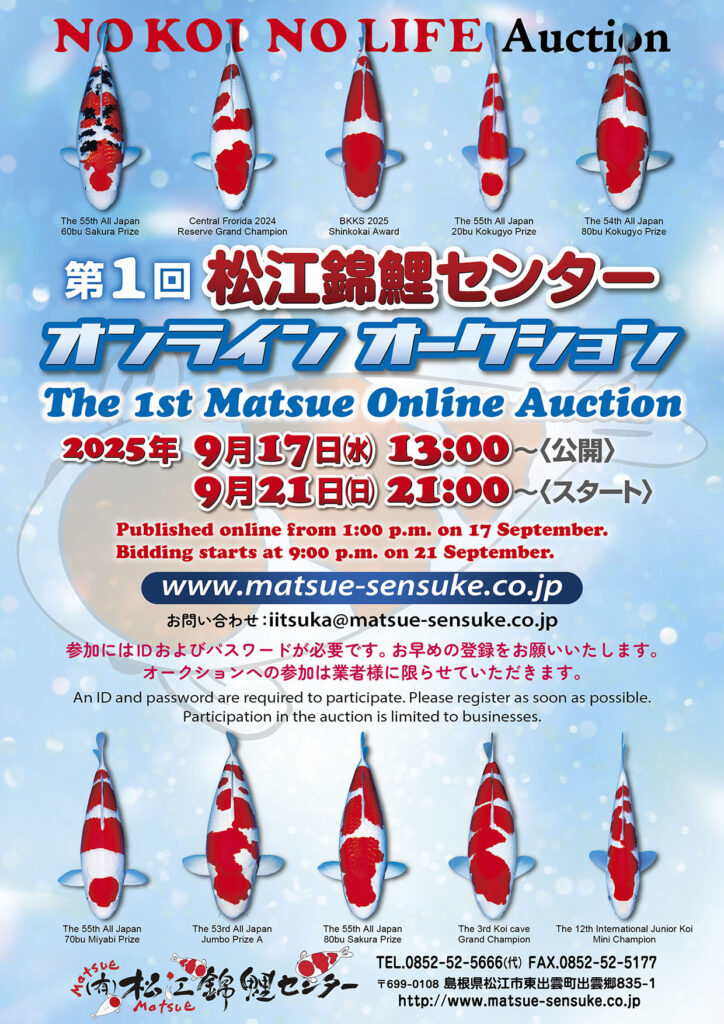The feed he was giving his Koi at the time of our interview in late July was a relatively rare mix of floating and sinking types for Koi enthusiasts, using the sinking type for high water temperatures and the floating type of Para clear and Medi K. The choice of feed shows his attention to detail, and he says, ‘I use Medi K because it’s good for the health of the Koi, and Para clear because it protects the gills. I’ve never used sinking pellets before, but I think I’ll use them up by August or September, so I’ll be able to see how they affect the condition of the Koi’s gills, and then I’ll decide whether to continue using them or not. I’ve used about 24kg of food in the last month and a half, so that’s quite a lot for the number of Koi I have.’
As feeding a large amount of food is the basis of Mr. Kawakami’s breeding, he naturally pays attention to water quality. The filtration tanks that come as standard with each FRP tank are cleaned once every five days. The filtration tanks in the Tosai containers are cleaned even more frequently, with cleaning every three days being essential.
‘If you don’t do it at that frequency, they start to smell. Especially Tosai, because in winter we keep the water temperature at 24℃ and feed them a lot. So we mark the days on the calendar when we’re going to clean them. Sometimes I think it’s a bit of a chore, but we always do it. We take it more seriously than our work (lol). If you look after them like that, even when they’re Tosai, there’s almost no chance of them dying when they’re 2 or 3 years old.’
The FRP tank used to keep Koi over 4 years old is a Wakishimizu 10 model, which is suitable for Koi of 60cm to 70cm in length and the amount of food they eat. It has a capacity of 1.8 tonnes, which is sufficient for the amount of water, and when combined with a 400-litre filtration tank, it maintains good water quality. In this environment, where the number of Koi of the same size can increase by 2 or 3, the fact that all the Koi are growing large and healthy seems to show how important it is to prevent the deterioration of water quality in order to keep them eating.
‘Even though we feed them so much, the water doesn’t get dirty, so I think the power of Wakishimizu is great. I think the Koi would stop eating if it wasn’t there.’
The Koi that Mr. Kawakami buys are basically Tosai, and he first raises them in containers over the winter. After that, the males are moved to FRP tanks for 2-3 year-olds, and by late July they reach a maximum length of 50cm. Then, after two years of raising, the ones that have become particularly beautiful are moved to FRP tanks for 4 year-olds and older.
For example, the male Showa sanshoku (60bu Champion at the 51st Kanto-Koshin District Koi Show) that we featured on the cover of the March issue was bought as a Tosai and kept in our pond throughout its life, and it was never put in a Mud pond, but it grew to this size by the time it was 3 years old (when it won the award). These days, even the males are beautiful, and there are Koi that are just as good as the females. Also, if you feed the females the same way, I think it will ruin their body lines.’
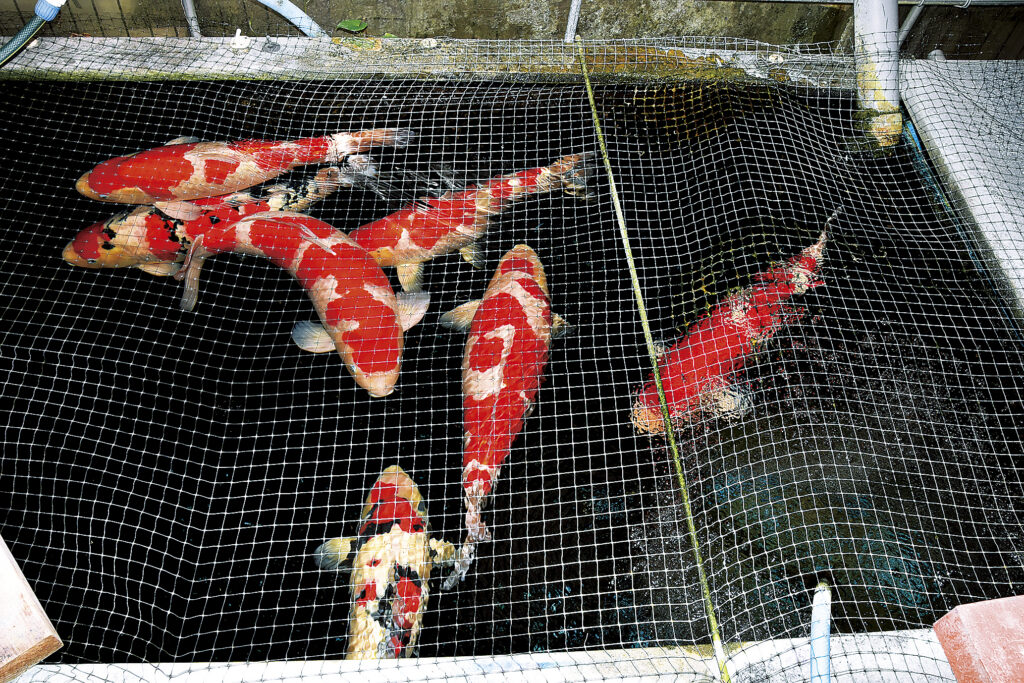
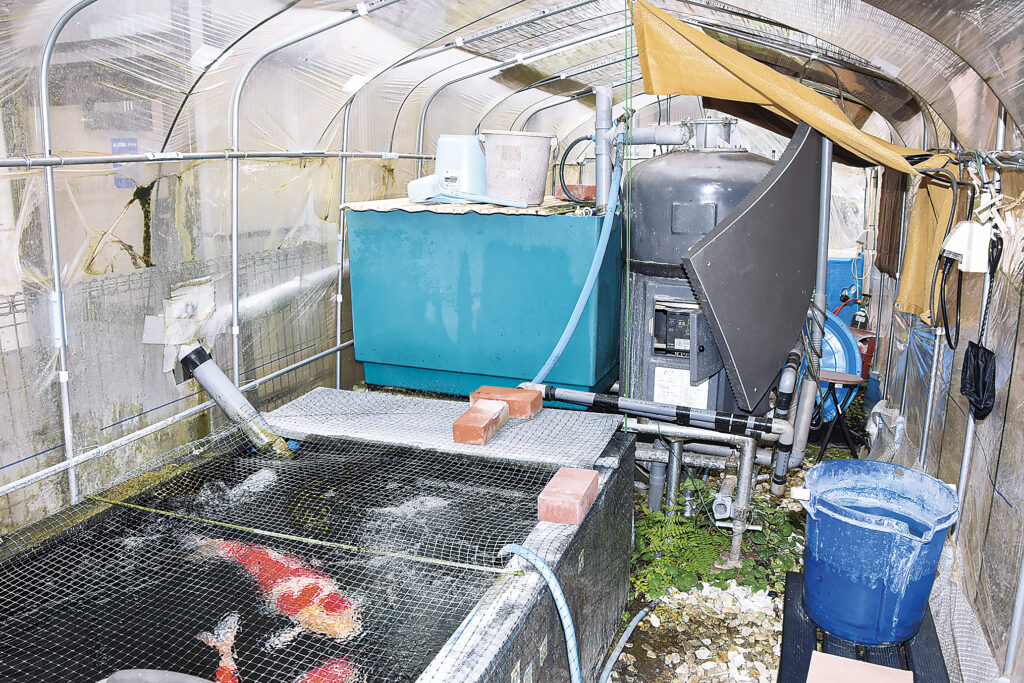
Wakishimizu 10 model.
Winning an award with a Koi you raised yourself gives you confidence
Using social networking services to share information, ‘Even with this kind of equipment, you can win awards’
Mr. Kawakami started raising Nishikigoi in earnest about five years before the article ‘Let’s enjoy Nishikigoi in a 3.3m2 pond! At the time, he didn’t have a preference for male or female, and he says, ’I was at the level of thinking that females were better because they grew fatter.
However, Koi were a familiar presence from his childhood, as his father kept Koi in the garden pond at his family home in Hiroshima Prefecture. He would visit places like Takeda Koi Farm (Hiroshima City) with his father and sometimes get to choose the Koi for himself.
‘I didn’t actually raise them myself, but it was fun to choose them,’ says Mr. Kawakami. After he started earning an income as a member of society, he would buy Koi from places like Takeda Koi Farm when he went back to his parents’ house and put them straight into the pond, so his relationship with Koi was never severed. He says that he always wanted to keep Koi in the future, and he even ordered an FRP tank to go with the completion of his current home. In the early days, he often had Koi sent from Takeda Koi Farm, which he had been familiar with since childhood, and the majority of the Koi in the article ‘Let’s enjoy it in a 3.3m2 pond!’ are Bredo by Takeda Koi Farm.
